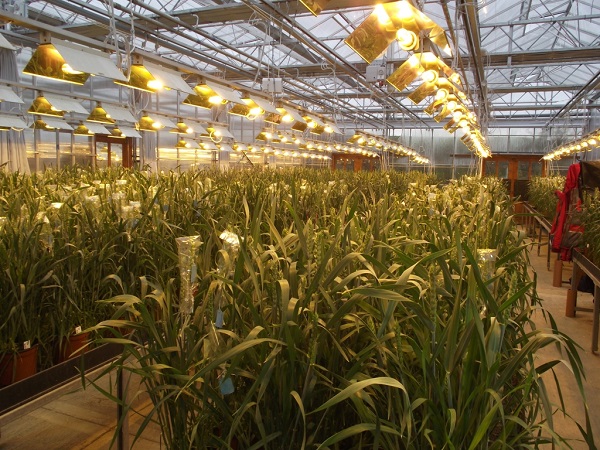The great and the good gathered at Peterborough Arena last month for the Association of Applied Biologists ‘Crop Production in Southern Britain’ conference. CPM reports on proceedings.
The indirect effect of cover crops is more useful than any competitive effect.
By Lucy de la Pasture
An eclectic mix of researchers, agronomists and wider industry converged on the East of England showground to hear the latest research findings, with a tightly jammed two days of presentations set to get the grey matter ticking. The content proved to be rich pickings for those in attendance.
With the focus initially on disease, AHDB’s Dr Paul Gosling presented his research into the cost of septoria to the industry. As the most significant disease in wheat and basis of all fungicide programmes, surprisingly little information is available regarding the yield penalty from septoria, useful to assess the success of fungicide programmes or more poignantly, for regulators to determine the impacts of restrictions on the availability of fungicides, he told delegates.

The outcome of a case in the European Court of Justice will determine the regulation around new breeding techniques.
“In the UK, the number of fungicides to control foliar pathogens, principally septoria, has increased since 1990, with most crops now receiving four sprays. Despite this increase, monitoring of commercial crops indicates no decline in disease levels, with at least 1% septoria on leaf 2 in all but the most favourable years,” he said.
“This suggests a disconnect between the intensity of use of foliar fungicides and disease pressure, which is likely to be neither economically nor environmentally sustainable.”
His work looked at a large number of trials, conducted over many years, enabling him to establish an overall relationship between disease level and lost yield. He reported that 1% infection on leaf 2 had a yield penalty of 0.67% yield.

Paul Gosling told delegates that septoria costs the industry close to 0.5M tonnes/annum in terms of potential yield.
Septoria has a cost even in the absence of yield loss, he said, estimating the mean spend on fungicides used exclusively for septoria control at £31.60/ha. Using these figures, he concluded that septoria cost the industry close to 0.5M tonnes/annum in terms of potential yield, at a cost of around £53M (at £125/t), rising to more than 1M tonnes in a high disease pressure year, or £170M.
Perhaps the highlight of the first day was a workshop held by CRD, aimed to help them gather views from the field on some of the regulatory issues facing agronomists and spray operators at the sharp end of product use. And views were forthcoming!
Jayne Wilder, a member of CRD’s operational policy team, assured delegates they would be listened to and the initiative was widely welcomed by those present, with the workshop packed to the gills.
The general consensus was an overwhelming view that labels could be made less confusing and statutory requirements in particular should be clearer. Buffer zones were a further area where the rules were perceived to becoming more complex and clarity was deemed to be an issue, with many growers worried about inadvertently ‘getting it wrong’.
On the fundamental subject of whether risk or hazard should be used as the future criteria for determining approvals, a return to a risk-based assessment was strongly preferred by delegates, giving plenty of food for thought for the CRD team to chew over as they prepare for exit from the EU.
After lunch thoughts turned to blackgrass, which had a conference slot worthy of its status as the UK’s most troublesome weed. Rothamsted’s Richard Hull presented a paper which investigated the speed non-target site resistance (NTSR) to the ALS inhibitor, Atlantis (mesosulfuron+ iodosulfuron), occurred in different blackgrass populations. He looked at the cross-resistance pattern and in particular, whether this would have any impact on the future efficacy of widely used herbicide, flufenacet.
“The area sprayed annually with Atlantis hasn’t decreased much since its peak in 2011, in spite of a slide in performance as a result of target site and NTSR,” he told delegates.
The research was carried out on different populations of blackgrass – including one which had never been exposed to Atlantis. The results showed repeated applications of the herbicide resulted in the rapid selection of NTSR, probably by enhanced metabolism.
In NTSR the molecular structure of a herbicide is more important than its mode of action, so cross-resistance need not automatically extend to other ALS-inhibiting herbicides, especially those with different molecular structures. In contrast, with target site resistance some degree of cross-resistance would be expected, he explained.
The implication being that for such clear cross-resistance to all the ALS-inhibiting herbicides in the study, some common aspect in their molecular structures must have made them vulnerable to the same NTSR mechanism. The critical point was that this had occurred solely through the use of Altlantis, with no other ALS inhibitors having been applied.
Dr Stephen Moss presented some old research findings into some novel methods to control blackgrass that had never been before been published. His paper suggested that late herbicide applications had potential to reduce viable seed return.
Based on studies with flamprop-M-isopropyl, he found that late applications in May when 10% of blackgrass heads had emerged, consistently produced the best overall control. Reductions of up to 90% in viable seed return were achieved with similar reductions in the weed population in the following crop. He pointed out that while flamprop is no longer available in Europe, this work highlights the potential of this approach which deserves study with newer herbicides.
His work also highlighted the effect of row spacing on blackgrass populations, concluding that narrower row widths had fewer blackgrass heads/plant.
“On 6cm rows, there were 18-23% less heads than in 12cm rows but wider rows are more vulnerable. “It’s something to be aware of since there’s a current trend towards planting on wider row widths,” he said.
His paper further revealed his work into cover crops and allelopathy, which had produced very inconclusive results and he questioned its practical relevance.
“The indirect effect of cover crops is more useful than any competitive effect on blackgrass and allelopathy studies didn’t prove to have any relevant effects. In my opinion, greater emphasis should be placed on reducing seed return and more rational use of post-harvest stubble management techniques to reduce weed populations,” he added.
In a further paper, Stephen Moss warned that Italian ryegrass was a potentially even bigger problem than blackgrass and growers should avoid introducing the crop into an arable rotation.
“Italian ryegrass produces 10 times more seed per plant than blackgrass and is more competitive. 100 ryegrass heads/m2can cause a yield reduction of 1.2t/ha, compared with 1.0t/ha for blackgrass at the same population.”
On day two, attention turned to plant breeding and Penny Maplestone, British Society of Plant Breeders, gave a fascinating overview of developments in breeding techniques and the potential they offer to the industry.
“There’s been a massive explosion in genomics, combined with other techniques, which offers endless possibilities to change the game in plant-breeding innovation,” she told delegates.
“One of the rate-limiting factors in plant-breeding programmes is screening, although high-output phenotyping and marker-assisted selection has speeded the process up. But now there’s a move towards genomic selection which uses markers across the whole genome, making it possible to predict which lines will make the best parents.
She described genome editing as ‘keyhole surgery’ for plants. The term covers a number of techniques, with the best known being CRISPR-Cas9.
“It’s very specific and precise, giving breeders the ability to change just one thing. That means they can quickly select for a trait without bringing across the ‘genetic baggage’ that would normally come with it and then needs to be removed by back-crossing within current breeding programmes,” explained Penny Maplestone.
Gene editing also allows breeders to knock out or alter gene function or expression, as well as incorporate new DNA sequences.
“The beauty of these methods is that they give the plant breeder the ability to develop products that could have been made through more traditional breeding techniques and without including any foreign DNA.”
The big question mark over whether plant breeders will ever be able to realise the potential of these innovations remains, as regulatory uncertainty continues to hang over them, she said.
One of the major issues surrounds whether the products of new breeding techniques are GMOs. Another difficulty lies with accessing genetic resources from different countries because they can choose to exercise their sovereign rights over them.
“The Nagoya protocol was set up to encourage member countries to work together but the rules are very opaque and complex, so plant breeders in practice have great difficult in knowing they are complying with all the requirements under the protocol. Uncertainty means risk for plant breeding companies, so the area remains fraught with difficulty.”
The definitive EU position on how new plant-breeding techniques should be classified has been much delayed. Dr Louise Ball, a member of Defra’s EU crops and GMO team, explained to delegates the current legal situation.
“One of the issues is there’s no history of safe use for new genomic techniques and no legal view has been forthcoming from the EU Commission. They’re due to publish a scientific explanatory note in the first quarter of 2017 but their legal view is awaiting the outcome of a case currently in the European Court of Justice (ECJ),” she said.
France have asked the ECJ to consider questions regarding genome editing, a ruling which will clarify whether current EU GMO regulation should be applied to new breeding techniques or not. However, a decision isn’t expected to be forthcoming until April 2018 so the regulatory stalemate is likely to continue, she explained.
Louise Ball emphasized that the UK Government was supportive of innovation and new plant-breeding techniques, with Defra farming minister George Eustice actively promoting their importance.
“Although the uncertainty remains, we’re inching forward albeit very slowly and the ECJ case will be very important. Ministers are committed to innovation and science-based regulation but ultimately problems need to be resolved with both legislation and public perception,” she concluded.




